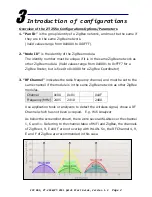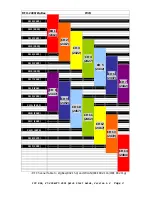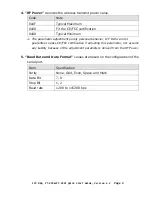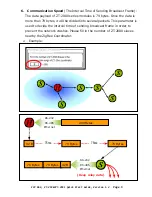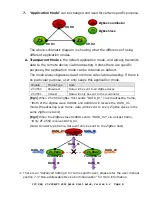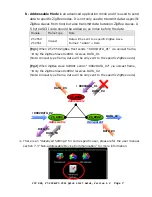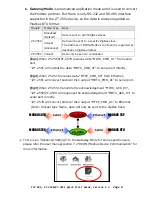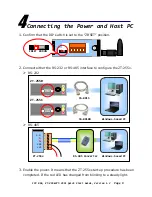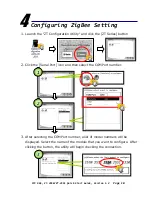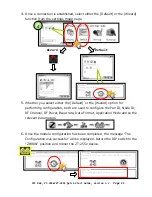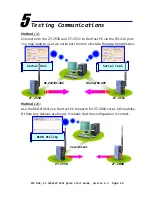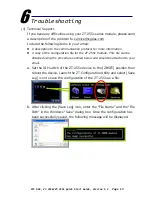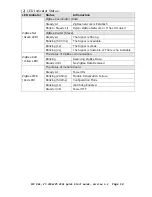
7.
“Application Mode”
can be changed and used for certain specific purpose.
The above schematic diagram is showing what the difference of using
different application modes.
ZC
ZS
ZS
00 00
ZigBee
Coordinator
ZigBee
Slave
ZS
ZC
00 01
00 02
a.
Transparent Mode
is the default application mode, and always transmits
data to the remote device via broadcasting. Unless there are specific
purposes, the application mode can be retained as default.
The mode always bypasses data to remote side via broadcasting. If there is
no particular purpose, user only keeps this application mode.
Module
Frame Type
Note
ZT-2550
Broadcast
Data will be sent to all ZigBee slaves
ZT-2551
Unicast
Data will only be sent to the coordinator
[Eg1]
When ZT-2550 ZigBee Host sends “DATA_01” via broadcasting frame,
→Both of the ZigBee slave 0x0001 and 0x0002 will receive the DATA_01.
(
Note: Broadcasting type frame, data will be sent to every ZigBee slaves in the
same ZigBee network
)
[Eg2]
When the ZigBee slave 0x0001 sends “DATA_02” via unicast frame,
→Only ZT-2550 receives DATA_02.
(
Note: Unicast type frame, data will only be sent to the ZigBee host
)
ZC_0000
ZS_0001
ZS_0002
Transparent
Transparent
Transparent
DATA_01
DATA_01
DATA_03
DATA_03
DATA_02
DATA_02
DATA_01
※
There is an “Advanced Settings” for some specific user, please refer the user manual
section 7.3 ”Non-addressable Device Communication” for more information.
ICP
DAS,
ZT
‐
2550/ZT
‐
2551
Quick
Start
Guide,
Version
1.2
Page
6


